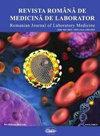VEGF-C和podoplanin作为脓毒症的生物标志物。实验研究
IF 0.5
4区 医学
Q4 MEDICINE, RESEARCH & EXPERIMENTAL
引用次数: 0
摘要
背景:脓毒症是重症监护病房发病率和死亡率的主要原因。本研究探讨了血管内皮生长因子- c (VEGF-C)和足磷脂蛋白(PDPN)在脓毒症中的可能作用。方法:Wistar大鼠22只,随机分为实验组(A、B组,n=8/8)和对照组(C组,n=6)。A组腹腔注射产生广谱β -内酰胺酶的大肠杆菌活菌,b组腹腔注射脂多糖诱导脓毒症。c组腹腔注射无菌生理盐水,24小时后采血检测血清VEGF-C水平,并检测肝、肾、肺组织中PDPN的表达。结果:A组血清VEGF-C水平高于C组(p=0.05), B组高于C组(p=0.004)。在A组血培养阴性与阳性的动物(p=0.04)和B组血培养阳性与A组血培养阳性的动物(p=0.03)中VEGF-C也有所增加。与A组相比,A组肺泡细胞和B组和C组肾近端小管上皮中PDPN的组织表达强度较高。结论:循环VEGF-C可以成功地作为血培养阴性和肾功能衰竭高风险的脓毒症的生物标志物,而PDPN似乎对活菌诱导的脓毒症的肺损伤具有保护作用。本文章由计算机程序翻译,如有差异,请以英文原文为准。
VEGF-C and podoplanin, as biomarkers of sepsis. An experimental study
Abstract Background: Sepsis is the leading cause of morbidity and mortality in intensive care units. This study explored the possible role of vascular endothelial growth factor-C (VEGF-C) and podoplanin (PDPN) in sepsis. Methods: 22 Wistar rats were divided into three groups: two experimental (Group A and B, n=8/8) and a control (Group C, n=6). Sepsis was induced with intraperitoneal injection of ESBL (extended-spectrum beta-lactamases)-producing E-coli live bacteria for group A and with lipopolysaccharide for group B. Sterile saline solution was injected for group C. Blood samples were collected after 24 hours to determine the serum level of VEGF-C, and PDPN expression was examined in liver, kidney, and lung tissues. Bacteremia was assessed for group A. Results: Higher serum levels of VEGF-C were found in Group A vs C (p=0.05) and group B vs. C (p=0.004), respectively.VEGF-C was also increased in animals with negative- vs. positive blood cultures from group A (p=0.04) and from group B vs. those with positive blood cultures from group A (p=0.03). High intensity of PDPN tissue expression was observed in the pulmonary alveolocytes from Group A and epithelium of the proximal renal tubules in groups B and C, compared to group A. Conclusions: Circulating VEGF-C can be succesfuly used as a biomarker of sepsis with negative blood cultures and high risk of renal failure, whereas PDPN seems to exert a protective role against lung injuries in live bacteria-induced sepsis.
求助全文
通过发布文献求助,成功后即可免费获取论文全文。
去求助
来源期刊

Revista Romana De Medicina De Laborator
MEDICINE, RESEARCH & EXPERIMENTAL-
CiteScore
0.31
自引率
20.00%
发文量
43
审稿时长
>12 weeks
期刊介绍:
The aim of the journal is to publish new information that would lead to a better understanding of biological mechanisms of production of human diseases, their prevention and diagnosis as early as possible and to monitor therapy and the development of the health of patients
 求助内容:
求助内容: 应助结果提醒方式:
应助结果提醒方式:


